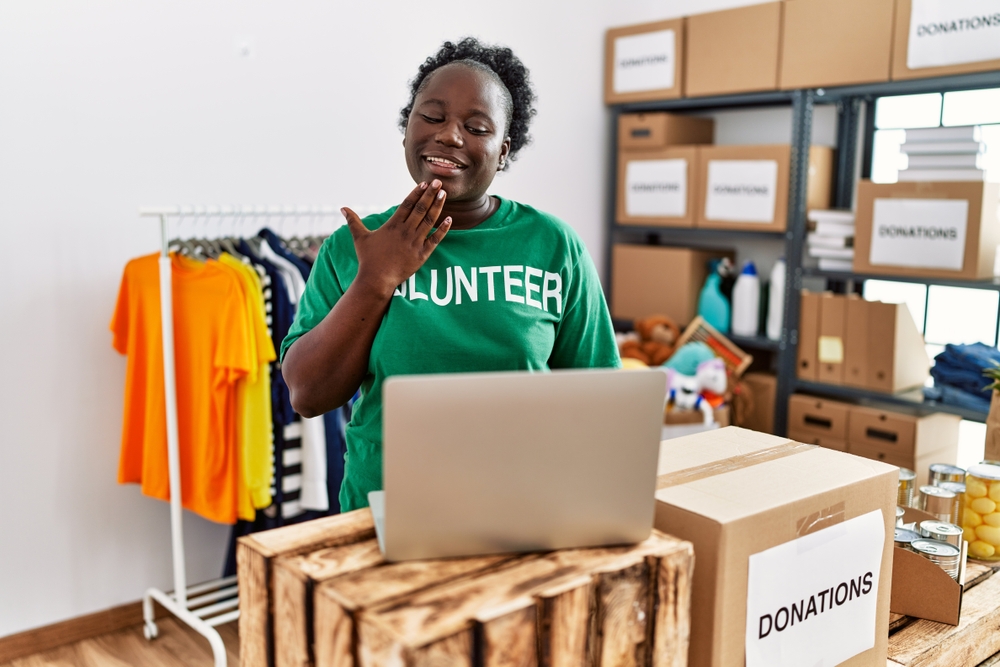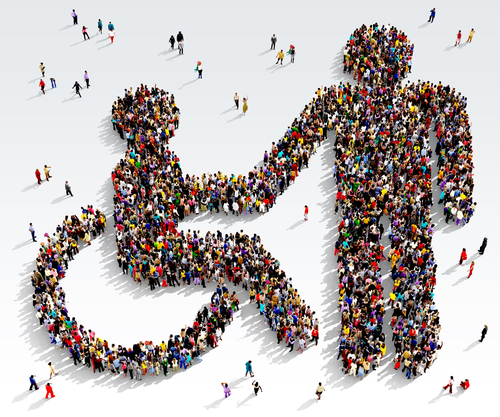If you’re not a member of the disability community, you may not realize that July is Disability Pride Month. Because of misinformation and misunderstanding, people with disabilities are often not thought of as equals or valued members of society. But all people – with or without disabilities – deserve to feel a sense of pride about themselves! Listen, people with disabilities constitute the nation’s largest minority group; so, if you’re not already connected to it… know that you could be at some point during your lifetime (whether you become disabled or a caregiver). But anyone can become a disability ally right now!
Being a disability ally doesn’t mean you have to be an expert on all things pertaining to the disability community. Rather, allyship, as defined by Dictionary.com is “the status or role of a person who advocates and actively works for the inclusion of a marginalized or politicized group in all areas of society, not as a member of that group but in solidarity with its struggle and point of view and under its leadership.”
Here are ways to be a disability ally during Disability Pride Month and beyond…
1. Combat ableism.
Ableism is defined as discrimination against disabled people; and/or the tendency to regard people with a disability as incomplete, diminished or damaged, and to measure the quality of life with a disability against a nondisabled standard. First, evaluate whether you may be consciously or subconsciously ablest. Then, mindfully combat ableism by educating yourself and others about disabilities. For example, encourage your company to embrace an inclusive workforce, introduce inclusive/diverse books and television programs to family members, encourage community sites (like your church or gym) to prioritize accessibility, advocate for equal access by communicating with elected officials, speak up when you hear others use discriminatory words and welcome people with disabilities into your life.

2. Align with disability-serving charities.
You can help support the disability community by donating (time, funds, resources and more) to further the missions of disability-focused organizations. Advocacy, volunteerism and fundraising makes a difference!
3. Put people first.
The movement of disability pride is growing but, of course, disability is not the only identity a person has. It’s advised that the community-at-large practice “person-first language,” meaning a “person with a disability” versus a “disabled person.” Note that the person, not the disability, comes first. However, language within different sectors of the disability community isn’t always consistent. Sometimes disability “identity first language” is acceptable. For example, a recent survey polled more than 11,000 people with or connected to autism spectrum disorder (ASD); and, over 76% of respondents favored “identity first language” — meaning personal preferences to be referred to as an “autistic person.” Confused? That’s OK! People with disabilities usually don’t mind being asked about preferences. Overall, be cautious of using outdated, offensive terms.
4. Scrap labels.
The use of either extreme praise or negative labels inevitably over-emphasizes one aspect of a person’s life; thus, making a disability the primary factor. Many don’t like to feel pitied for or victimized by their disability (i.e., “It must be hard being a stroke victim”). On the flip side, people shouldn’t continually be put on a pedestal for living their typical life (i.e., “You’re so brave for trying that despite your disability. You’re my hero”). Just like typical people, those with disabilities are equal members of society with individual strengthens and weaknesses.
5. Don’t make assumptions.
There’s no shortage of misconceptions when it comes to disability. For example, the connection between wheelchair use and illness may stem from healthcare facilities customarily using wheelchairs to transport patients. But, in any setting, a person may use a wheelchair for a variety of reasons, none of which are connected to being sick. Perhaps the old saying, “You can’t judge a book by its cover” is spot on when it comes to members of the disability community… well, all humans for that matter. Not to mention that some disabilities are invisible. This quote comes to mind: Be kind always, for everyone you meet is fighting a battle you know nothing about.

6. Be conscious with communication.
Respectfully communicate with people with disabilities in the same manner as you would anyone else. When possible, make eye contact and speak in your normal tone of voice (not shouting). Regardless of ability level, no one wants to be treated like a child or patronized. Do speak directly to the person, rather than to an aide, caregiver or translator. And while their service animal may be adorable, it’s best not to engage with service animals unless permission is granted.
7. Grant personal space.
Consider disability equipment to be extensions of a person’s body. You wouldn’t push someone’s body that didn’t have a disability, and the same applies to disability devices; meaning don’t push someone’s wheelchair without asking first. Refrain from touching a cane, crutches, hand-held translator, oxygen tank, scooter, walker or other aid/tool.
8. Ask before attending.
Have you ever heard, “Here, let me help you!” Assertive helpers who frantically rush to assist without asking are likely just trying to be kind. But, sometimes, that potential helper doesn’t realize that the gesture is presumptuous. People with disabilities are extremely independent; others may be adapting to a newfound disability and find it beneficial to do things for themselves. If you’d like to offer a helping hand, simply ask first, such as “May I help you with that?” And don’t take offense if the answer is “no, thank you.”
9. Embrace teachable moments.
Children, especially those not accustomed to inclusion or diversity, have a natural, uninhibited curiosity. For example, little ones may ask a parent, “Why is that person in a wheelchair?” Some parents may uncomfortably react by shushing the child. This silencing makes disability feel taboo, rather than normalizing unique differences. Try to embrace teachable moments with simple, age-appropriate explanations, such as “Everyone is different. This person uses a wheelchair rather than legs to move around.”

10. Understand commonalities outweigh differences.
All humans can get hung up on differences. But people have so much more in common than they realize, regardless of ability. Just like people without disabilities, members of the disability community have families, jobs, hobbies, favorite foods, preferred pastimes and so on. Each one of us has varied likes, dislikes, personalities, backgrounds, etc. Most people, with and without disabilities, can make connections and identify similarities, regardless of physical, emotional or spiritual differences.
11. Listen with compassion, not judgement.
Sometimes friends vent to each other. That doesn’t mean that people with disabilities are necessarily looking to have every barrier solved for them. Listen, hear, validate. Avoid unnecessary and inapplicable comparisons. For example, maybe you temporarily used a wheelchair when you broke a limb, but that doesn’t mean you understand what a friend adapting to amputation is experiencing. A supportive ear is kind.
More Tips to Be a Disability Ally
- Follow and interact with disability activists on social media.
- Attend Disability Pride Month events – in person or virtually.
- If and when possible, support special education teachers and other disability allies.
- Read content by disability-focused news outlets to stay connected to happenings within the disability community.
- Use your purchasing power to support inclusively minded brands.
- Participate in observance holidays. For example, wear mismatched socks on World Down Syndrome Day, wear red on Wear Red Day, etc.
Thanks, in advance, for choosing to be a disability ally!






